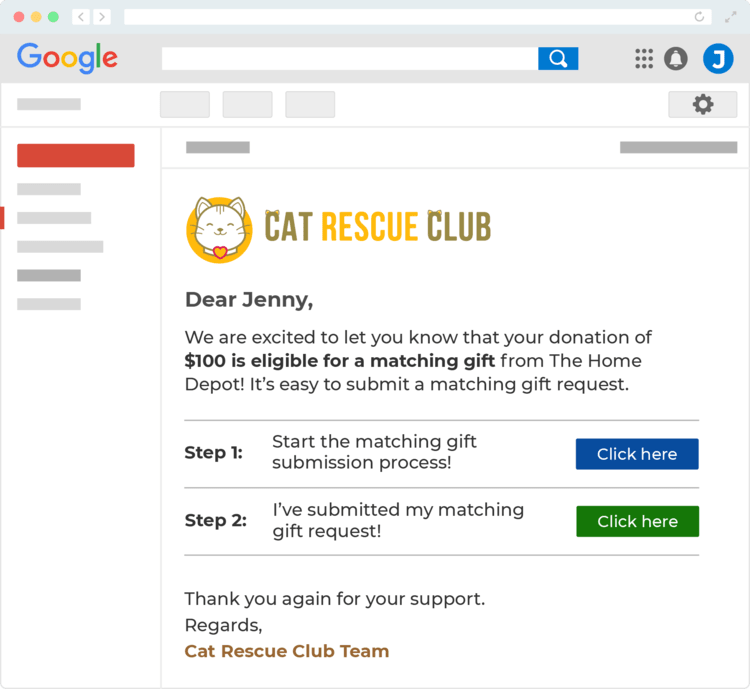Today’s businesses have redefined success to encompass more than just profits, which has led to advances in corporate social responsibility (CSR).
For nonprofits, CSR offers new forms of marketing and financial support, allowing them to raise money, get extra volunteer support, and connect with new audiences. However, the landscape constantly evolves, so nonprofits need to understand the latest trends shaping corporate giving.
To help, we’ll unpack current CSR trends and their implications for nonprofits, so you can take advantage of these opportunities.
Companies Engage in a Variety of CSR Efforts.
New CSR programs are popping up left and right as companies recognize the value of supporting nonprofits. From donating to charities to promoting causes to their customers, here are common CSR programs relevant to nonprofits.
Charitable Giving
One of the most common CSR practices is charitable giving. Many businesses look at charitable giving as a way to give back to the communities in which they operate, helping to strengthen local ties and attract new customers.
Employees who work for businesses that give back feel proud of their companies. Not to mention, it helps companies differentiate themselves from competitors to attract socially conscious consumers. Some common types of corporate philanthropy include:
- Shop for a Cause Programs: Through these programs, companies donate a portion of proceeds from designated products or during specific promotional periods to their nonprofit partners.
- Matching Gifts: This is a form of workplace giving in which employers match their employees’ charitable donations. We’ll explore this type of program in depth later, but for now, know that companies most often match donations dollar-for-dollar. That means matching gifts can double some of your supporters’ donations.
- Sponsorships: Through sponsorships, companies will donate to support your cause or specific events. In exchange, the nonprofit offers perks like featuring the business’s logo on marketing collateral.
- In-Kind Donations: Some companies provide in-kind support like product donations, equipment, pro bono services, and venue spaces. For instance, 360MatchPro’s corporate philanthropy examples guide explains that the clothing retailer Bombas donates a pair of socks, a t-shirt, or a pair of underwear for every item a customer purchases.
Seek partnerships with companies that offer philanthropic programs like those listed above. These funds can sustain your initiatives, support specific projects, and fill funding gaps.
Corporate Volunteerism
Many businesses organize team-based volunteer projects to build camaraderie. They may also offer individual skills-based opportunities, enabling employees to contribute their expertise to nonprofits. Some companies even provide Volunteer Time Off (VTO) so employees can help out nonprofits during the workday without giving up their paychecks.
However they go about it, corporate volunteerism is a valuable source of support. Engaging with companies that offer employee volunteer programs can provide access to skilled volunteers, which is essential for capacity-building, implementing special projects, and earning hands-on support.
Corporate Partnerships
Today’s companies develop partnerships with nonprofits to launch long-term and consistent philanthropic efforts. Through these partnerships, they may offer:
- Financial contributions through grants, regular donations, or sponsorships
- In-kind donations such as products or pro-bono services to reduce nonprofits’ expenses
- Employee volunteers for events or special projects
- Cause-related marketing, such as co-branded products, to generate revenue and awareness for charitable causes
- Training or technical assistance
To find these collaborations, look at local businesses or organizations where several of your supporters work. These companies may be interested in a partnership to build a positive reputation in your community or with their employees.
Corporate Employees Expect Workplace Giving Opportunities.
Today’s employees take pride in working for socially responsible companies. That’s why workplace giving is a prominent employee engagement tactic. In fact, 69% of individuals feel more loyal to employers that offer workplace giving programs.
If you’re unsure what “workplace giving” entails, it essentially allows employees to donate money or time to nonprofits through their workplace. Nonprofits Source’s corporate giving trends guide explains that your current supporters are the best way to tap into these programs. They can advocate for their employers to start these programs. Those who want to go above and beyond can even facilitate introductions between your team and company leadership.
Now, let’s walk through several common programs that any nonprofit professional should know about.
Matching Gifts
As mentioned, companies with matching gift programs match employees' charitable donations to eligible nonprofits, effectively doubling the impact of their contributions. Typically, these programs have stipulations, like which employees are eligible, which nonprofits are eligible, submission request deadlines, and donation amount requirements.
Here’s how to educate donors about this opportunity:
- Add messages about matching gifts to your fundraising appeals, explaining that donors can potentially double their contributions.
- Embed an employer search tool into your donation page, making it easy for donors to research their eligibility.
- Create a dedicated matching gifts page on your website that explains these programs.
- Encourage donors to research their employers’ matching gift programs and submit requests via acknowledgment letters, such as the example below.

Lack of supporter awareness is the biggest challenge you’ll face with matching gifts. Clear up donors’ confusion, and you’ll receive more matching gifts. After all, who wouldn’t want to double their contributions at no extra cost?
Payroll Deductions
Employees can donate a portion of their salary to nonprofits through automatic payroll deductions within their company’s payroll software.
This systematic approach allows nonprofits to receive consistent and reliable donations. Market this opportunity to donors as a way to contribute to your cause regularly without having to initiate individual transactions.
Volunteer Grants
Volunteer grant programs provide financial grants to nonprofits based on employees' volunteer hours. Companies commonly offer a predetermined amount for every hour employees volunteer, such as $20 per hour. Another approach is to offer a set grant amount once an employee reaches a certain number of volunteer hours with a nonprofit. For example, a business might offer $500 for every 25 hours volunteered.
To tap into this workplace giving opportunity, educate volunteers about the availability of volunteer grants. Volunteers may step up their efforts to fulfill their employers’ requirements, or if they’re already eligible, they’ll know to submit a request. Either way, they’ll maximize their impact by providing additional funds for your mission.
Donation Drives
During a donation drive, companies invite employees to contribute monetary gifts or tangible goods to a charitable cause or nonprofit.
For in-kind donation drives, companies collect items like clothing, food, toys, or school supplies to be given to a nonprofit or individuals in need. Often, these drives coincide with holidays or in response to specific events. The goal is to rally employees around a common charitable purpose.
Technology Helps Nonprofits Tap Into CSR Initiatives.
Many companies use CSR platforms to facilitate employee giving programs and monitor impact. However, companies aren’t the only ones who can leverage software to elevate impact. For nonprofits, the right technology can lead to greater support from CSR programs.
Here are just a few platforms to enhance your CSR efforts:
- Matching gift databases enable you to identify and track matching gift opportunities for donors. These databases compile information on companies that offer matching gift programs, including details on eligibility criteria, matching ratios, and submission procedures. If your database has a company search tool, embed it into your donation form and other important pages on your nonprofit website, so donors can research their eligibility!
- Volunteer management solutions enable you to track volunteer hours and grant eligibility. Encourage volunteers who are grant-eligible to submit requests to your employers and provide them with any materials they need, such as a record of volunteer hours.
- Online shopping platforms are online shopping apps and browser extensions that allow a portion of your sales total to go to charitable causes. The vendor partners with various retailers to negotiate donation percentages, and all nonprofits need to do is encourage supporters to shop through the app or browser extension. For instance, your organization can earn up to 10% on purchases through ShopRaise. That way, supporters can turn everyday shopping into support for your cause, all without spending a penny more than they normally would.
By leveraging these types of technology, your nonprofit can grow its ability to promote CSR initiatives, measure impact, and collaborate with stakeholders to drive positive change.
Wrapping Up: Tap Into CSR Programs at Your Nonprofit
As businesses increasingly recognize their responsibility to do good in the world, nonprofits stand to drive more meaningful change. Key an eye peeled for these programs and leverage the innovative strategies we’ve covered to drive positive change for your cause.
